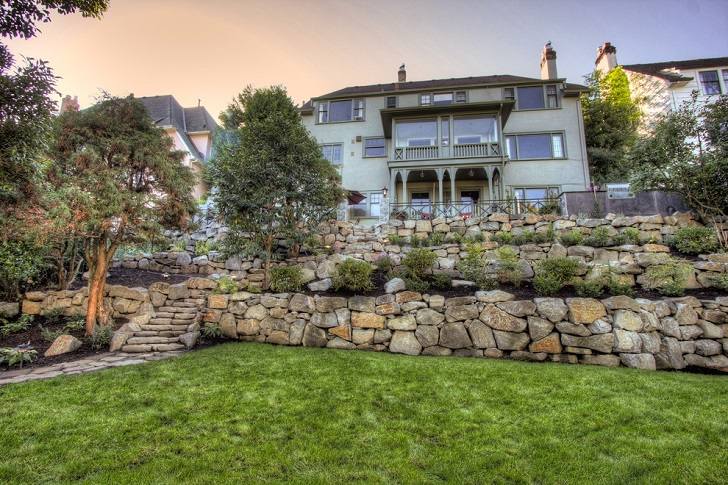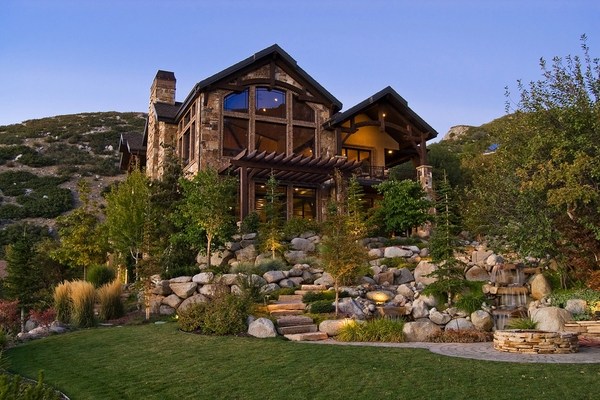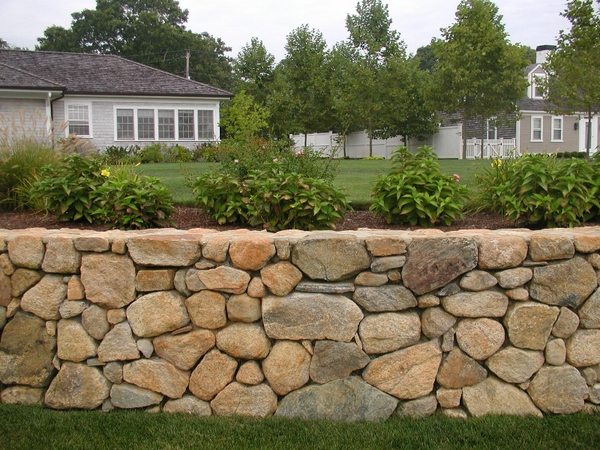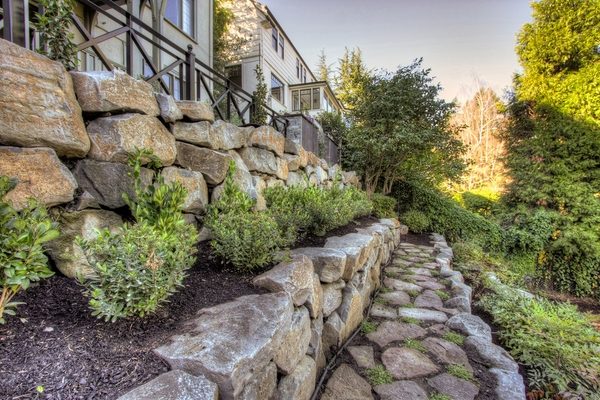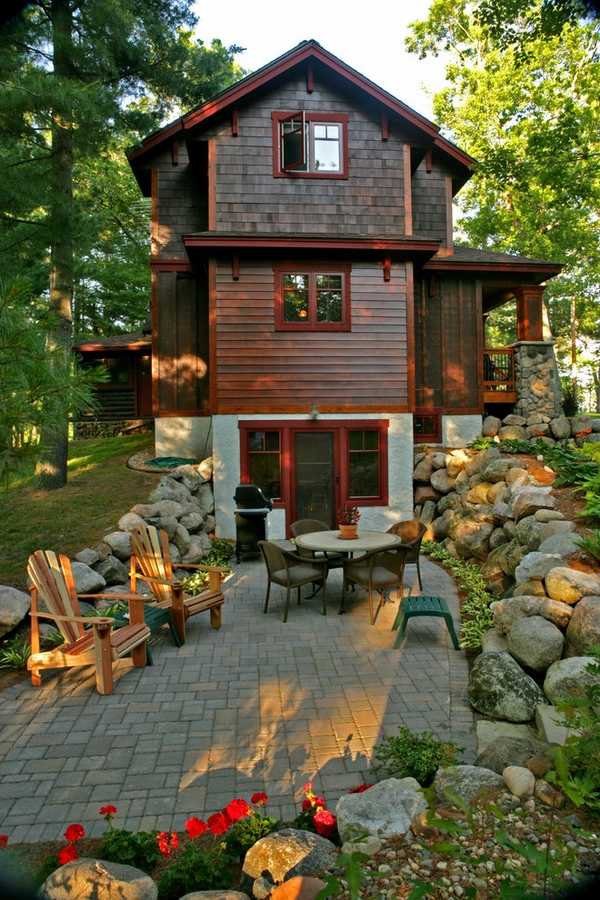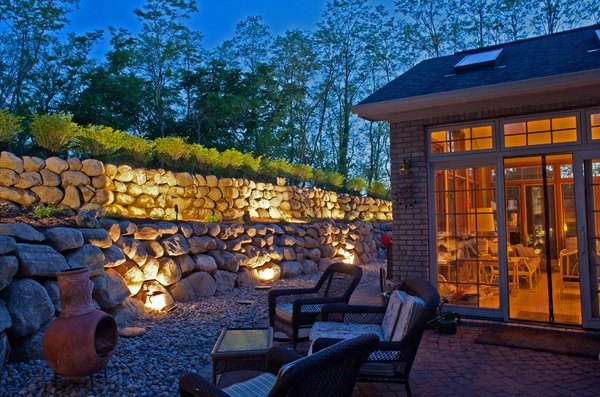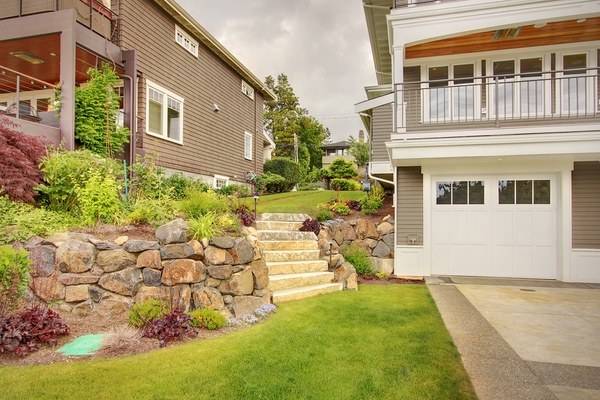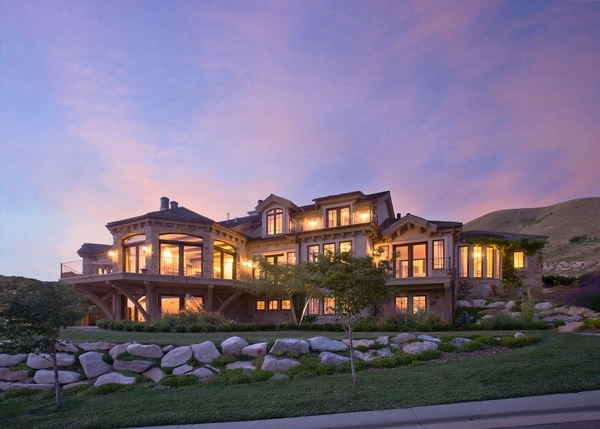Boulder retaining walls are not only visually stunning but also serve a crucial function in landscaping. Their robust nature makes them an excellent choice for preventing soil erosion, enhancing garden aesthetics, and creating unique outdoor spaces. This article delves into the intricate details of boulder retaining wall design, highlighting their stability, natural appeal, and construction considerations.
Boulder Retaining Wall Design: Boulder retaining walls stand out for their beauty and strength, making them a versatile choice for landscape architects and homeowners alike. These walls not only add structural integrity to sloped terrains but also elevate the visual appeal of gardens and outdoor spaces. By effectively combating soil erosion, boulder retaining walls merge functionality with aesthetics, blending seamlessly into various landscaping designs.
The use of boulders in landscaping is a testament to their natural allure and versatility. These stones, available in an array of sizes and colors, add a touch of sophistication to outdoor settings. Commonly found near pools, water features, and meditation gardens, boulders play a pivotal role in creating a harmonious blend of textures and hues within the landscape.
Strong, Stable, and Visually Appealing Boulder Retaining Wall Design
Boulder retaining walls epitomize the perfect blend of strength, stability, and visual appeal in landscape design. These walls not only serve a practical purpose by preventing erosion but also add a touch of natural elegance to any outdoor space. Incorporating boulder retaining walls into hilly terrains or sloped landscapes transforms them into functional and visually captivating areas for relaxation and leisure.
Harnessing the Benefits of Natural Stone in Boulder Retaining Wall Design
Boulder retaining walls shine as garden structures due to their durability and aesthetic appeal. Withstanding harsh weather conditions, these walls exude a timeless charm that complements various landscapes and architectural styles. The natural formations of boulders, sculpted over time by natural forces like water and glaciers, provide a distinct and visually appealing surface.
The versatility of boulders extends to their shapes, catering to a myriad of landscaping needs. Whether used for creating rock gardens, water features, or structural walls, boulders offer a diverse range of design possibilities. Each type of boulder brings forth unique advantages, merging practicality with aesthetic finesse to elevate outdoor spaces.
Choosing a boulder retaining wall for landscaping projects offers a host of benefits, including longevity, cost-efficiency, and a seamless integration with natural surroundings. Crafted from field stones, these walls exude a rustic charm that transcends trends, ensuring a timeless addition to any property. The enduring appeal of boulder retaining walls lies in their ability to blend effortlessly with diverse landscapes, creating a lasting impact.
Construction Tips for Building a Boulder Retaining Wall
Constructing a boulder retaining wall requires meticulous planning and attention to detail. Opting for evenly sized boulders simplifies the construction process and enhances the wall’s structural integrity. Local sourcing of boulders is essential due to their weight, ensuring a sustainable and environmentally conscious approach to landscaping. Seeking professional advice on preparatory steps, such as tree removal and site preparation, is crucial for a successful construction project.
Before commencing construction, obtaining the necessary permits and meticulously planning the wall’s design are paramount. Establishing a robust foundation through proper excavation and layering of gravel and sand sets the stage for a durable and visually appealing boulder retaining wall. The strategic placement of boulders without mortar, based on size and position, ensures a sturdy and aesthetically pleasing final outcome.
Creating proper drainage systems within boulder retaining walls is imperative to facilitate water flow and prevent structural damage. Enhancing wall stability and visual appeal can be achieved by filling gaps with smaller boulders, ensuring a cohesive and authentic appearance. The meticulous selection and fitting of boulders guarantee a resilient and aesthetically pleasing boulder retaining wall that withstands the test of time.
Frequently Asked Questions
1. What are the benefits of using boulder retaining walls in landscaping?
Boulder retaining walls offer both aesthetic appeal and structural integrity, preventing soil erosion and enhancing the visual appeal of outdoor spaces.
2. How do boulders contribute to the natural beauty of garden landscapes?
Boulders, available in various sizes and colors, add sophistication and texture to outdoor settings, creating a harmonious blend within the landscape.
3. What makes boulder retaining walls a versatile choice for different landscaping designs?
Boulder retaining walls merge functionality with aesthetics, seamlessly blending into diverse landscaping designs while combating soil erosion effectively.
4. What construction considerations are essential for building a durable boulder retaining wall?
Evenly sized boulders, proper excavation, strategic placement without mortar, and effective drainage systems are crucial for a sturdy and visually appealing boulder retaining wall.
5. How can boulder retaining walls withstand harsh weather conditions and the test of time?
Boulder retaining walls made from natural stone are durable and resilient, withstanding weather elements and providing a timeless charm that complements various landscapes.
6. What are the key factors to consider when sourcing boulders for a retaining wall construction project?
Local sourcing of boulders is essential due to their weight, ensuring sustainability and environmentally conscious landscaping practices.
7. Why is professional advice and proper planning crucial before undertaking a boulder retaining wall construction project?
Professional advice helps in preparatory steps like tree removal, site preparation, obtaining permits, and meticulous planning, ensuring a successful and durable boulder retaining wall.

